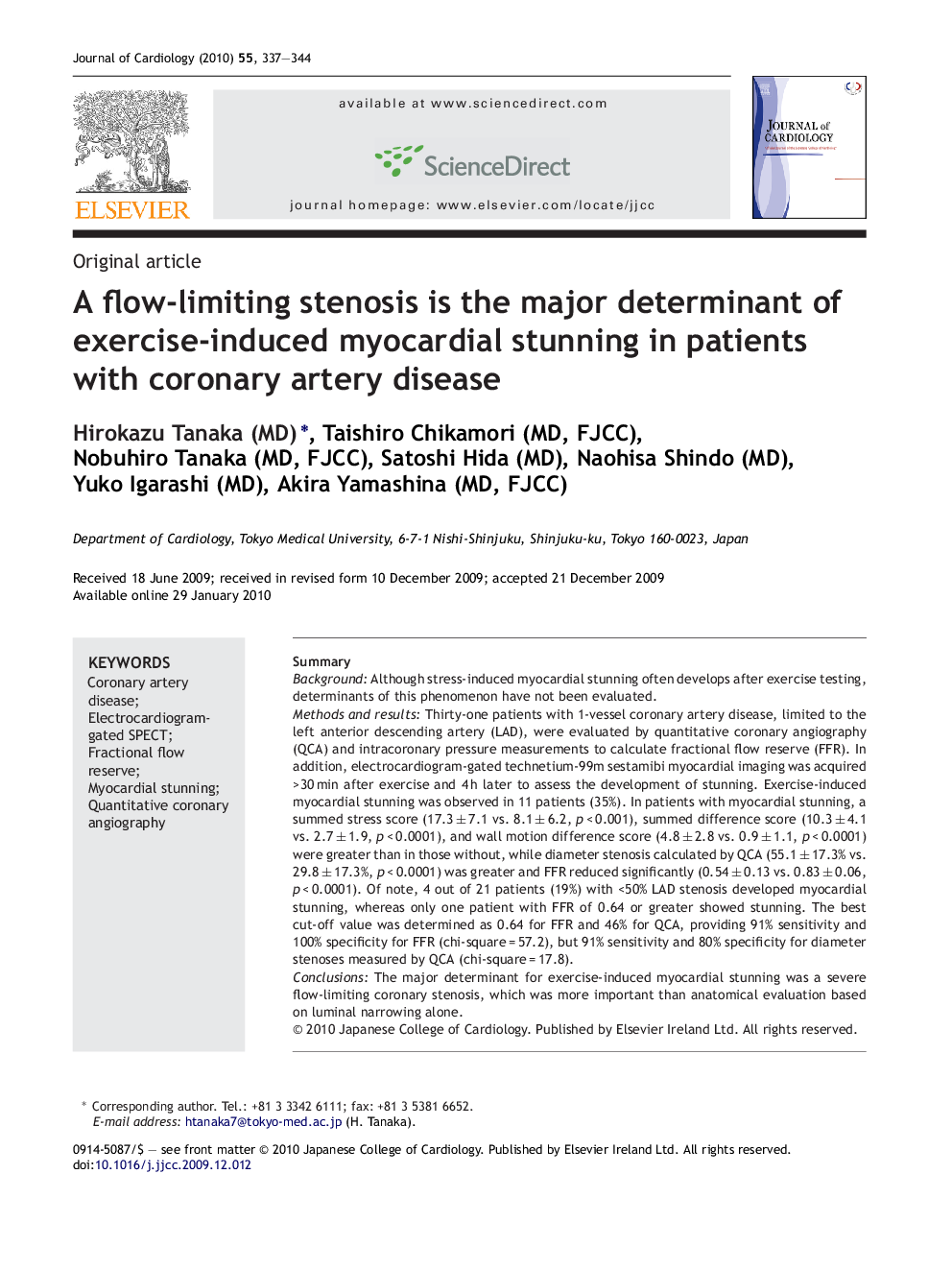| Article ID | Journal | Published Year | Pages | File Type |
|---|---|---|---|---|
| 2963572 | Journal of Cardiology | 2010 | 8 Pages |
SummaryBackgroundAlthough stress-induced myocardial stunning often develops after exercise testing, determinants of this phenomenon have not been evaluated.Methods and resultsThirty-one patients with 1-vessel coronary artery disease, limited to the left anterior descending artery (LAD), were evaluated by quantitative coronary angiography (QCA) and intracoronary pressure measurements to calculate fractional flow reserve (FFR). In addition, electrocardiogram-gated technetium-99m sestamibi myocardial imaging was acquired >30 min after exercise and 4 h later to assess the development of stunning. Exercise-induced myocardial stunning was observed in 11 patients (35%). In patients with myocardial stunning, a summed stress score (17.3 ± 7.1 vs. 8.1 ± 6.2, p < 0.001), summed difference score (10.3 ± 4.1 vs. 2.7 ± 1.9, p < 0.0001), and wall motion difference score (4.8 ± 2.8 vs. 0.9 ± 1.1, p < 0.0001) were greater than in those without, while diameter stenosis calculated by QCA (55.1 ± 17.3% vs. 29.8 ± 17.3%, p < 0.0001) was greater and FFR reduced significantly (0.54 ± 0.13 vs. 0.83 ± 0.06, p < 0.0001). Of note, 4 out of 21 patients (19%) with <50% LAD stenosis developed myocardial stunning, whereas only one patient with FFR of 0.64 or greater showed stunning. The best cut-off value was determined as 0.64 for FFR and 46% for QCA, providing 91% sensitivity and 100% specificity for FFR (chi-square = 57.2), but 91% sensitivity and 80% specificity for diameter stenoses measured by QCA (chi-square = 17.8).ConclusionsThe major determinant for exercise-induced myocardial stunning was a severe flow-limiting coronary stenosis, which was more important than anatomical evaluation based on luminal narrowing alone.
